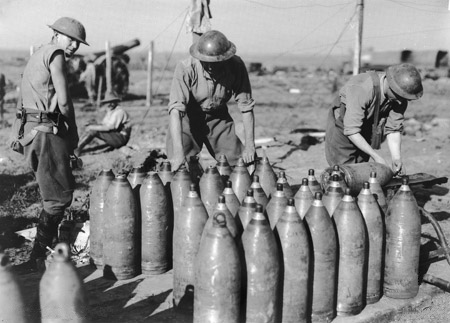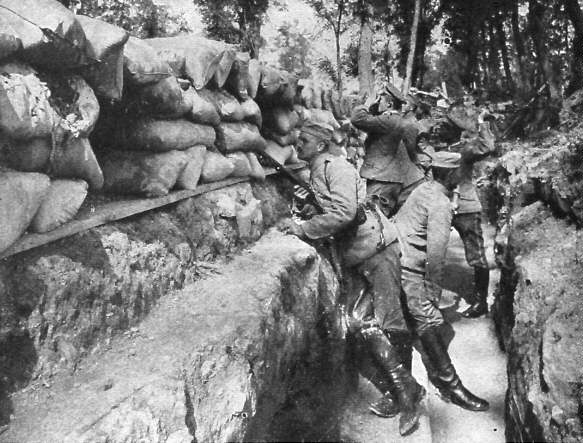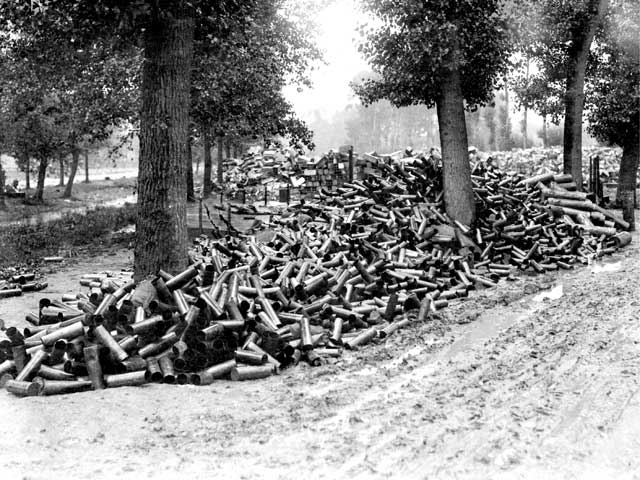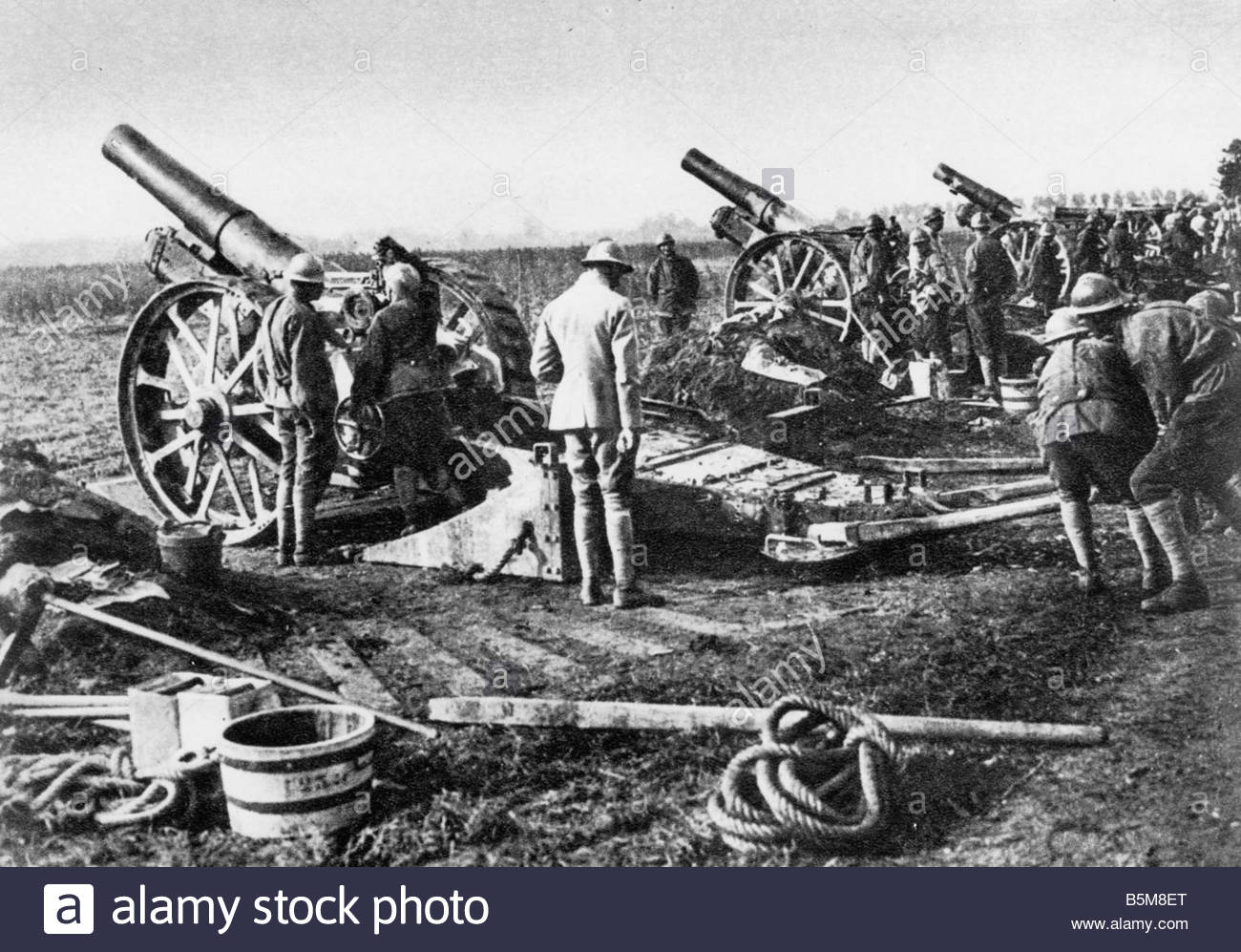Ground Attack Coming
Germans Well Dug In; Fears British Offensive Will Fail
Special to The Great War Project
(21-25 June) The British open their enormous bombardment at the river Somme on June 24th a century ago.
It is sustained along a twelve-mile front, reports historian Martin Gilbert. “More than 1500 guns and howitzers fired more than 1.7 million shells.”

British soldiers prepare artillery shells for Battle of the Somme, summer 1916.
Just how effective theses shells are is not immediately known. Many are duds. Many simply “churn up the already battered surface, causing less damage than hoped to the deep dug-outs of the German defenders.”
Nevertheless, “the impact of the bombardment on the mood and morale of the attackers was considerable.”
All the same, there are early indications the bombardment faces other problems. “During brief pauses in the bombardment,” Gilbert reports, “raids were made across no-man’s land to report on the situation in the forward German trenches.” One British intelligence report brings some troubling information…
…the British raids following the bombardment are unsuccessful. Some troops even “turned tail.”
As for the Germans they have launched no major attacks along the Somme sector. In fact, the Germans have not gone on the offensive there for a year-and-a-half. They build deep and complex defenses during this time.
“Scattered clues,” writes historian Adam Hochschild, “suggested that these were disturbingly sturdy.”

German trenches at the Somme, summer 1916.
“From both sides, miners were now busily digging under the other side’s trenches to plant explosive charges. Some surprised British miners digging at a level they thought far below the German trench system found themselves unintentionally hacking through the wall of a German dugout.”
But, Hochschild reports…
“this and other signs of how deep the Germans had built their shelters were brushed aside.”
Field Marshall Douglas Haig, the British Commander in Chief, inspects his divisions on horseback. He is supremely confident. On June 22nd he writes to his wife, “The situation is becoming more favorable to us.” Two days later Haig writes, “I feel that every step in my plan has been taken with the Divine help.”
In his diary Haig adds, “The men are in splendid spirits…the wire has never been so well cut, nor the artillery preparation so thorough.”
The British bombardment begins on June 24th, “just as the last German effort at Verdun was ebbing away,” reports historian Norman Stone. “The [British] expectation being that everything [on the German side] would be wrecked.”

Spent British artillery shells, Battle of the Somme, summer 1916.
It isn’t. “Four hundred heavy guns and a thousand field guns were not enough to deal with a [German]defensive system of three miles’ depth and twenty miles in length.”
The start of the British bombardment gives the Germans ample warning of an imminent offensive. “The Germans on their ridges had dug very deeply, lining the defenses with concrete, and these defenses were not knocked out at all.]
There is also action these days a century ago at Verdun in northern France. The French hold on the town is slipping away. Because of this, the French command pleads with Haig to order the beginning of the Somme offensive now. Haig insists his forces are not yet ready.
The Germans tighten the screws on the French at Verdun, writes war historian John Keegan, by launching a bombardment “of Green Cross gas, an improved form of chlorine, on the French artillery lines.”
Reports Keegan, “temporarily robbed of artillery protection, the French defense faltered, in the face of an attack by elite German troops.”

British guns at Battle of the Somme, summer 1916.
Meanwhile at the Somme, the British artillery barrage does not let up. In a few short days, thousands of British infantry will pour out of their trenches and smash into the German defensive lines, according to Haig’s plan.
The ground assault is well-planned, Keegan writes, but “almost everything that Haig expected of the enormous artillery effort…was not to occur.”

1.7 million shells and it still didn’t do the job. Incredible. This is gut wrenching to read, knowing the unprecedented disaster that is to come.